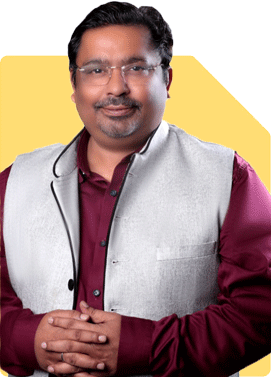I am 45 years old.
I have 50 lakh of rupees with me which I want to invest in Mutual fund on SWP plan.
Please suggest me some good safety mutual funds.
Ans: At 45 years, investing with a focus on safety and a steady income is a wise decision. Using an SWP in mutual funds can provide regular income while preserving and potentially growing your principal. Here’s a structured plan to help you achieve this.
1. Understanding the Benefits of SWP
An SWP offers a steady monthly income by withdrawing a fixed amount from your mutual fund investment.
Consistent Cash Flow: SWP provides you with a regular, predictable income each month, making it ideal for meeting monthly expenses.
Capital Preservation: With a well-chosen fund, your Rs 50 lakh principal can remain largely intact.
Tax Efficiency: SWP withdrawals are tax-efficient as the capital gains component of the withdrawal may attract lower tax rates. This structure can be advantageous when compared to other income options.
Key Insight: SWPs provide a steady income without disturbing the entire investment, keeping a portion invested for potential growth.
2. Choosing Mutual Funds for Safety and Stability
Since your primary goal is safety, selecting funds with a conservative profile is essential. Consider funds that balance growth and capital preservation.
Debt-Oriented Funds: Debt funds, particularly short- to medium-duration funds, offer safety and moderate growth. These funds invest in government securities, corporate bonds, and other low-risk instruments. They are less volatile than equity funds and are suited for regular income.
Hybrid Funds for Stability: Conservative hybrid funds invest in both debt and a small portion of equity. The debt portion offers stability, while the equity exposure provides growth. These funds are suitable for those looking for higher returns than pure debt funds but without the risk of full equity exposure.
Balanced Advantage Funds: These funds dynamically allocate between equity and debt based on market conditions. They provide a cushion in market downturns, making them suitable for steady withdrawals with moderate growth.
Recommendation: Select a combination of conservative hybrid and debt-oriented funds for a balanced risk approach.
3. Avoiding Common Missteps with Direct and Index Funds
Direct and index funds may seem cost-effective, but they can lack essential guidance and flexibility.
Direct Funds: Though they have lower expense ratios, direct funds require constant monitoring and expertise. Regular funds, managed through a Certified Financial Planner (CFP), offer the advantage of professional advice. This support is invaluable for adjusting to market changes and rebalancing as needed.
Index Funds: While index funds are passive and track the market, they don’t provide the flexibility needed in changing markets. Actively managed funds in regular plans allow fund managers to make strategic choices based on market trends, benefiting investors in volatile conditions.
Insight: For SWP and safety-focused investments, regular funds managed with CFP guidance provide the expertise and proactive adjustments needed for secure growth.
4. Structuring Your Rs 50 Lakh SWP Investment
To maximize safety and income, diversify your Rs 50 lakh across different types of funds.
Debt Funds (50%): Allocate about 50% in short- to medium-duration debt funds. These funds provide a stable income base with low volatility.
Conservative Hybrid Funds (30%): A 30% allocation in conservative hybrid funds offers moderate growth. The debt component adds stability, while the equity portion contributes to potential returns.
Balanced Advantage Funds (20%): Allocate 20% in balanced advantage funds. They provide a balance of safety and growth by adjusting equity exposure based on market conditions.
Strategy: By diversifying your investment across these categories, you can optimize safety while still benefiting from modest growth. This mix provides steady returns suitable for SWP.
5. Setting the SWP Withdrawal Amount
Determining a sustainable monthly SWP amount is crucial to preserve your principal.
Assess Expected Monthly Needs: Calculate your required monthly income from the SWP to cover essential expenses. For instance, withdrawing Rs 30,000 - Rs 40,000 per month would be a conservative amount, allowing room for your investment to grow.
Avoid Excessive Withdrawals: Large withdrawals can deplete the fund’s value, especially during market downturns. Set an SWP rate that allows the fund to grow even after withdrawals.
Suggestion: Start with a modest SWP amount, reviewing it yearly with a CFP. This approach helps adjust for inflation and market changes without compromising your principal.
6. Tax Considerations in SWP Planning
Understanding tax implications is crucial in planning an SWP.
Equity Funds: For equity-oriented funds, long-term capital gains (LTCG) above Rs 1.25 lakh are taxed at 12.5%. Short-term gains are taxed at 20% if you sell within one year. Since SWP generally operates over time, long-term gains tax will mostly apply.
Debt Funds: For debt funds, both LTCG and STCG are taxed according to your income tax slab. While SWP withdrawals might be low on tax initially, your cumulative withdrawals could lead to capital gains over time.
Insight: Work with a CFP to plan tax-efficient withdrawals. This can significantly enhance net returns over the years.
7. Reviewing and Adjusting Your SWP Periodically
Market conditions and personal financial needs evolve, making regular reviews of your SWP crucial.
Annual Review: Assess the performance of your SWP investments yearly. If any fund is consistently underperforming, consider switching to a better alternative.
Adjusting the Withdrawal Amount: If inflation increases your monthly expenses, consider a slight increase in your SWP amount. However, ensure that it doesn’t impact your principal significantly.
Action Plan: Conduct annual reviews with a Certified Financial Planner to adjust SWP amounts, rebalance investments, and maintain stability.
8. Planning for Market Downturns
Equity markets and even debt markets can experience periods of decline. Preparing for these situations helps protect your SWP.
Emergency Cash Buffer: Maintain an emergency fund outside your SWP investments. This can cover expenses during market downturns without requiring additional withdrawals.
Switch to Safer Options During Volatile Times: In case of prolonged market downturns, shifting a portion of funds to liquid or ultra-short debt options could stabilize your SWP.
Tip: Having a buffer and flexibility can protect your investments during economic slowdowns.
9. Building a Sustainable SWP Strategy for the Long Term
An SWP is a reliable strategy for generating income from investments, but it needs a sustainable plan.
Avoid High-Risk Funds: Stick to conservative funds with low to moderate risk. Safety is more important than aggressive growth for an SWP.
Monitor Returns Regularly: Regularly track returns on your SWP investments. This helps you stay aware of performance and make timely adjustments if needed.
Best Practice: A conservative SWP strategy allows for a stable monthly income while preserving your investment over the years.
10. Finally
Your decision to invest Rs 50 lakh in an SWP reflects a sound plan for steady income and capital preservation. By choosing the right funds and structuring withdrawals wisely, you can maintain financial stability for years.
Diversifying across debt, hybrid, and balanced funds gives a balance of safety and growth.
Regular reviews with a Certified Financial Planner help adjust your SWP for changing needs.
Consider tax efficiency, sustainable withdrawal rates, and risk management to enhance the effectiveness of your SWP.
With a well-thought-out strategy and regular monitoring, your SWP can provide a reliable income stream while preserving your principal.
Best Regards,
K. Ramalingam, MBA, CFP,
Chief Financial Planner,
www.holisticinvestment.in
https://www.youtube.com/@HolisticInvestment

























